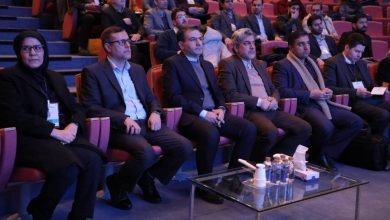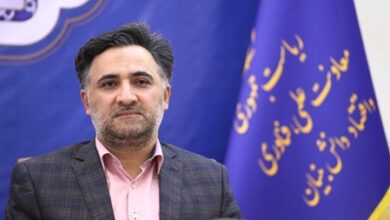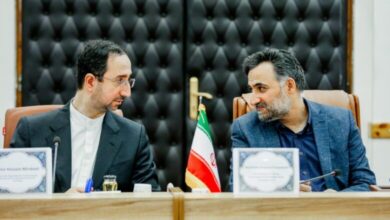Six Proposals by the Islamic Republic for Technological Cooperation Along the Silk Road

technological cooperation along the Silk Road at the Second Conference on “Belt and Road Exchange of Science and Technology.” These proposals were based on Iran’s national capacities, operational experience, and a region-focused perspective.
According to the Communications and Information Center of the Vice Presidency for Science, Technology, and Knowledge-based Economy, in his speech at the conference, Hossein Afshin said:
“Today, we are not merely attending an international conference, but standing at a turbulent edge of history—an era in which a nation’s soft power is no longer measured by the number of its arsenals or oil wells, but by the depth of its participation in building a technological, sustainable, and inclusive future. The developments of the past four decades have taught us that progress is neither achieved in isolation nor confined to a single territory. Development today is a complex global network where the survival of each node depends on the quality of its connections—and science and technology form the core of these connections.”
He added:
“The theme of this conference — scientific, technological, and innovative cooperation for global common development — reflects this principle: we either innovate together or remain isolated and constrained. In today’s world, challenges know no borders, and solutions must not be limited by geography.”
Afshin emphasized that the Islamic Republic of Iran, backed by a rich civilization of several millennia and informed by two generations of science and technology policymaking, is ready to play a more active role in shaping a new technological order within the Belt and Road Initiative (BRI).
He explained:
“The first generation of these policies, from the 1990s, focused on expanding higher education, developing scientific infrastructure, and establishing Iran’s place in global knowledge production. Since 2010, the focus has shifted toward creating economic value from knowledge. Today, over 10,000 knowledge-based companies operate in Iran’s innovation ecosystem. This is not just a number, but a symbol of Iran’s transition from a resource-based economy to a knowledge-driven economy.”
He further stressed:
“Now, at the intersection of the Belt and Road Initiative and the Fourth Industrial Revolution, it is time for this route to become more than a channel for the movement of goods; it must evolve into a corridor for the exchange of ideas, skills, technologies, and trust.”
Afshin, who also serves as President of Iran’s National Elites Foundation, presented the following six proposals for fostering effective and synergistic partnerships among BRI countries:
Establishing BRI TechMatch Platform:
A platform for matching affordable and adaptable technologies with the needs of developing countries. Iran is ready to collaborate with other nations to create a platform to identify and exchange low-cost, simple, and adaptable technologies, particularly in areas such as agriculture, healthcare, energy, and transportation.Creating a Regional Foresight and Technology Monitoring Center in Tehran:
A center to track emerging technologies—such as artificial intelligence, biotechnology, new energy sources, and quantum technology—in collaboration with universities and think tanks from participating countries, providing reports to inform policy and decision-making.Launching BRI LabsNet — a Network of Joint Reference Laboratories:
To ensure the quality of technology exchanges and reduce costs, Iran proposes the establishment of a multinational network of specialized laboratories to test and evaluate equipment and technologies produced within the BRI framework, fostering mutual trust and facilitating technological trade.Implementing a Regional Program for Technology Skills Training:
Focused on the youth of BRI partner countries, Iran suggests designing a joint technical and digital skills training program in collaboration with technical universities and online education platforms, delivered in local languages with practical content.Developing Cross-border AI Infrastructure for Smart Transport Along the BRI Route:
Iran proposes a set of collaborative projects to deploy AI-based cross-border infrastructure for transit transportation, smart logistics, and route monitoring. These efforts would include data exchange, algorithm design, and installation of sensors and analytical systems along key routes, enhancing the safety and efficiency of BRI transportation corridors.Drafting a Charter for Technological Cooperation Among BRI Countries:
The final proposal involves developing a shared charter focusing on ethics, data governance, and equitable technology transfer. This charter would institutionalize principles such as respecting national data regulations, fostering two-way technology transfer, protecting intellectual property, and promoting sustainable technological development—ensuring that cooperation is fair and beneficial to all partners.
Afshin concluded:
“We are standing on a path that is no longer just earth—it is light. This route is no longer filled with caravans, but with signals, codes, and minds that no longer wait for miracles—they are the miracle. We are heirs to a road that once carried silk, tea, and spices and now carries data, ideas, and intelligence.”
He further noted:
“If the Silk Road once served as a pathway for the passage of civilizations, today it must become a civilization that helps humanity move from fear to wisdom, from imitation to imagination, from dependence to design.”
He closed by saying:
“Let us, here and now, make no promises and offer no empty courtesies; we have come to forge partnerships for building a future—not an ambiguous one, but a future that is transparent, bright, and intelligent. And because the future is intelligent, only nations with enlightened hearts, awakened minds, and hands joined in collaboration will have a place in it.”






